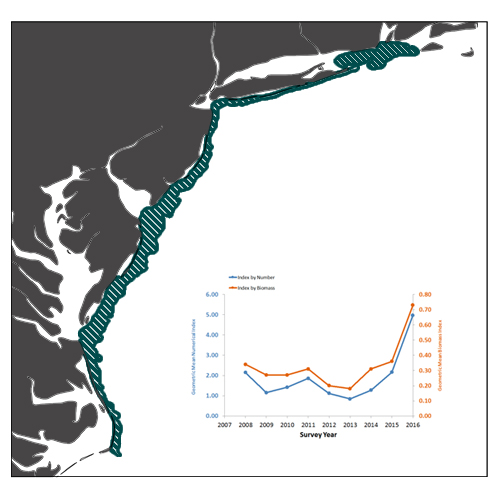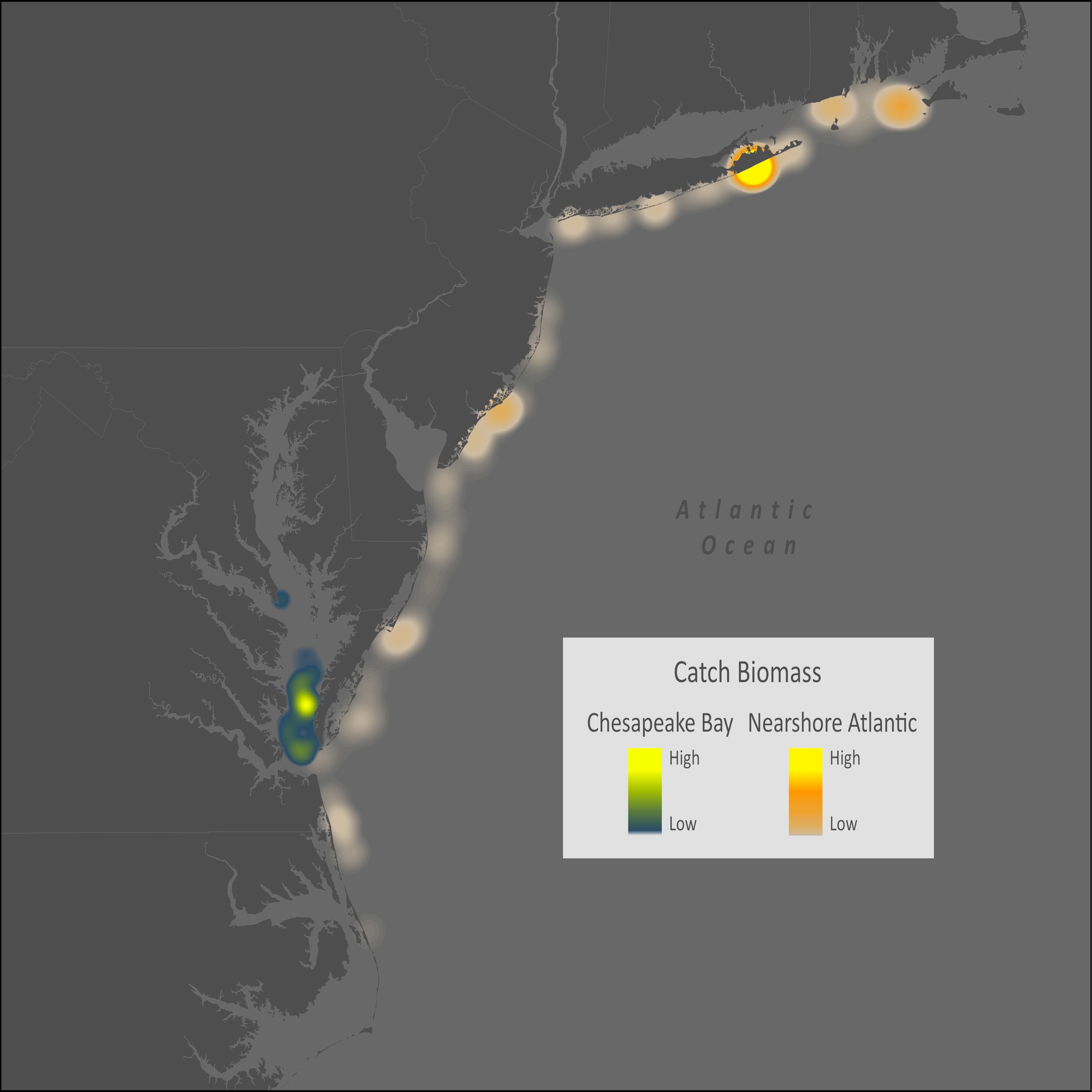Blueback Herring - Alosa aestivalis
*Information from FAO Species Identification Guide Western Central Atlantic*

Size
Maximum about 38 cm standard length, commonly to 30 cm standard length
|
Habitat, biology, and fisheries
Coastal, pelagic, euryhaline. Anadromous, adults migrate inshore and ascend rivers to spawn in fresh water or in slightly brackish pools with an outlet to the sea. Possibly overwintering near bottom and out from coast, approaching shore in late spring. Spawns in brackish or fresh waters of rivers,
having arrived in coastal waters a month or so later than A. pseudoharengus (Chesapeake Bay in April), later farther north, apparently when water temperatures are above 22 degrees C; young probably returning to salt water at the end of their first summer. Minimum age at maturity 3 years Estimated fecundity 30 000 to 400 000 eggs/female.
Eggs pelagic, semi-demersal, yellowish, semi-transparent, 0.87 to 1.11 mm.Often forms large schools. Vertical migrator; feeds on planktonic animals (i.e., copepods), small fishes, and shrimps. Probably not distinguished from A. pseudoharengus
in northern part of the range, but catches in
southern parts of its range are negligible. Caughtwith pound nets, weirs, seines, gill nets, fyke nets, and occasionally with otter trawls. Marketed mostly fresh and salted, and used as a baitfish in crustacean fisheries.
|
Distribution
Western north Atlantic (east coast
of Florida from St. Johns River northward to
Cape Breton, Nova Scotia). Uncertain if landlocked in Great Lakes.
|






